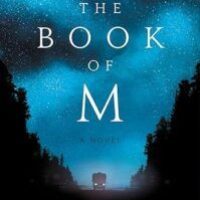In the stop-motion horror-comedy Wendell and Wild, Henry Selick and Jordan Peele join forces to create a Hellmaiden protagonist that coming-of-age films will be working overtime to compete with.
Way too often the entertainment industry force feeds us young girls who overcome hardships by choosing sensibility over sensitivity (I’m talking to you, Pocahontas and The Princess and the Frog!). Within the coming-of-age genre, complex emotions have been the hidden obstacles placed in the way of the female protagonists’ destinations, labeling emotions as a negative aspect of the transition to adulthood. Wendell and Wild’s Kat Elliot is a fresh and exciting protagonist who shows how combining sensibility and sensitivity can be a superpower for young girls.
In the face of grief, adolescent girls have been taught to run away from feelings of anger and resentment. And for many Black girls growing up, anger alone takes on different implications, with the heavy cloud of the ‘angry Black girl’ stereotype hanging over their heads the minute their smiles falter. Kat’s ability to access and display an array of emotions in the stop-motion film – yes, even the negative ones – becomes the reason why she receives a second chance at a life worth enjoying, not why she should suffer further.
When combating such an overwhelming and violent stereotype as the angry Black girl, a trope that has historically paved the way for the dehumanization of Black girls, film representations that appropriate and challenge the trope become automatic opposition to the white gaze. To be grieving and hardened in an unapologetic manner is a rare sight on screen for women at large; for a young Black woman like Kat Elliot to convey these emotions without repercussions is an act of resistance.
‘Wendell and Wild’ review: Jordan Peele and Henry Selick deliver a dark gem
The green-haired, boombox-toting mountain that is Kat Elliot is an electric protagonist, a goth, punk rock music connoisseur, and a demon summoner on the side. After the death of her parents turned Kat to violence and misdirection, juvie became her home and the origin of the scorned young pre-teen viewers came to know.
In light of receiving a chance of redemption at the Catholic boarding school in the same town she grew up and lost her loved ones in, the eerie realization that her parents’ beloved brewery and everything surrounding it has been burned down and buried overwhelms her beyond belief. Under the shadows of the private corporations that are buying up the buildings for personal profit, the beginnings of Kat’s drive to turn the town upside down begin to churn.
For a young Black woman to convey these emotions without repercussions is an act of resistance.
What makes Kat Elliot a force to be reckoned with – besides her ability to summon demons, obviously – is her refusal to submit to the cute, cuddly, and cheery protagonist trope that’s easy to root for while still demanding grace. Her not-so-sunny-disposition character arc goes against the grain of what coming-of-age films have commonly represented for adolescent girls and children of color. She’s angry, has personal demons, and still obtains the right to make meaningful friendships while combating an infrastructure like the prison industrial system.
Instead of the film demonizing anger as an unproductive emotion, Kat weaponizes it to tear down her own trauma and organizes a successful scuffle against the greed-ball private prison owners that serve as the movie’s true villains. Her unique accessibility to all emotions, even the stigmatized ones, drive and empower her to take on the surrounding adults twice her age, intimidating and turning them into putty in her hands. If adults believe anger and frustration are a blockage to a redeeming quality of life, imagine everyone’s surprise when a character utilizes these to overcome her personal demons — Wendell, Wild, and the theoretical not-so-cutesy ones. Combining these titles alongside her hellmaiden gig pretty much makes her the four-leaf clover of the coming-of-age genre.

Credit: Netflix
Watching a dark-skinned Black girl in animation reject respectability politics with an unapologetic approach feels like such a refreshing narrative it was almost too good to be true. This representation can almost be liberating after the countless other harmful depictions of Black girls within movies that display complex emotions and are then immediately punished for breaking the imposed rules of womanhood. While films like Diary of a Mad Black Woman and She’s Gotta Have It hide under the guise of a Black feminist film, the punishment extended onto the Black leads when they impose too much agency over their male counterparts and their emotions undercuts everything ‘progressive’ in question.
Selick and Peele’s intentionality throughout Kat’s character construction opens a world of possibilities for Black girls’ representation in considering not only the lack of minority representation in the entertainment industry but also the history of exploitative and limited images of Black characters in film. Kat’s badass approach to stomping through life, clearing space for herself instead of waiting for permission to speak, opens up a new world of possibilities for emoting and thinking about life when kids face the adolescent-to-adulthood stage. This remixing of the coming-of-age genre models a broader scope of options for minority characters when facing such a propagandistic force as the entertainment industry.
Other coming-of-age films should really consider falling in line soon. Kat’s got demons and she’s not afraid to use them!















